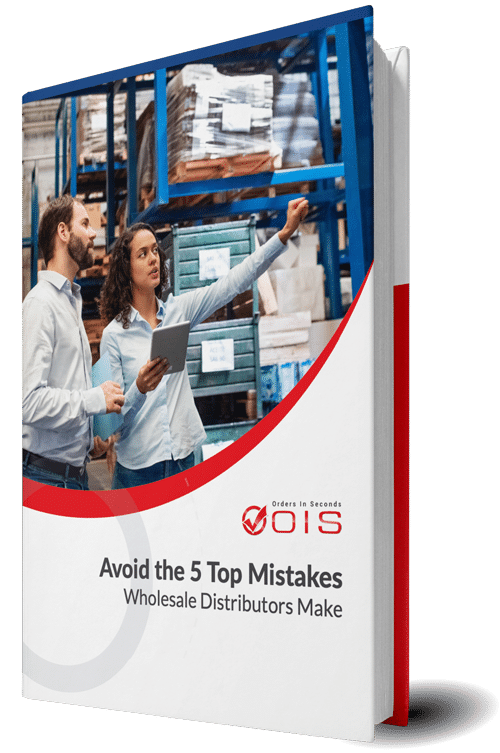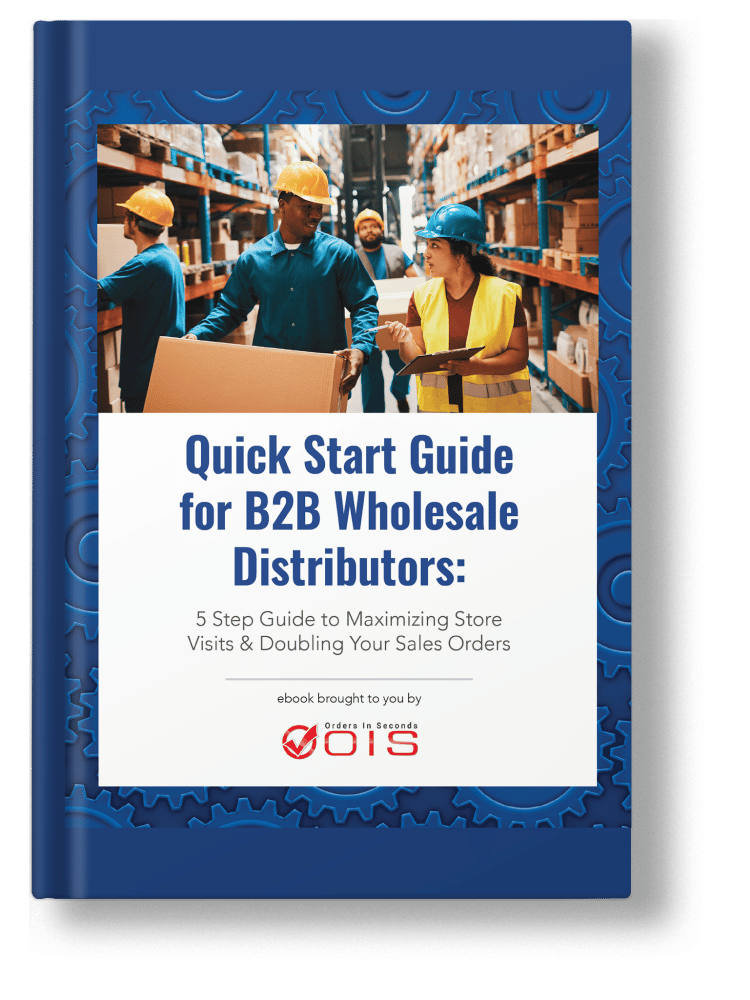Warehouse logistics involves managing the efficient movement of goods within a warehouse. Mastering it can lower costs and improve customer satisfaction. This article explores the essential elements, benefits, and challenges of warehouse logistics, offering insights and best practices for optimization.
Key Takeaways
- Effective warehouse logistics are essential for optimizing supply chain efficiency, involving organized operations for the receipt, storage, and distribution of goods.
- Challenges such as high operational costs, inventory control issues, and space management can hinder efficiency, necessitating continuous improvement and technological integration.
- Implementing advanced warehouse management systems, staff training, and automation are best practices that enhance operational efficiency and contribute to cost savings and improved customer satisfaction.
Table of Contents
- Understanding Warehouse Logistics
- Common Challenges in Warehouse Logistics
- Benefits of Efficient Warehouse Logistics
- Best Practices for Optimizing Warehouse Logistics
- Choosing the Right Warehouse Logistics Solutions
- Case Studies of Successful Warehouse Logistics Implementation
- Summary
- Frequently Asked Questions
- Take Control of Your Warehouse Logistics with OIS Inventory
Understanding Warehouse Logistics

Warehouse logistics is a crucial aspect of supply chain management that involves the organization and implementation of operations to move goods efficiently. At its core, it encompasses the physical flow of products during receiving and shipping, along with the data that tracks fulfillment times and inventory levels. Effective warehousing logistics and the warehouse logistics system not only reduce costs but also significantly enhance customer service by ensuring timely delivery of products.
A warehouse plays a pivotal role in centralizing logistics operations, which in turn enhances overall supply chain efficiency. From storing goods to preparing them for shipping, warehouses serve as the nerve center for logistics activities. This centralization adds value to a business by streamlining processes and facilitating smooth movement of goods through the supply chain.
Now, let’s delve deeper into the key components and technological advancements that shape warehouse logistics.
Key Components of Warehouse Logistics
The foundation of effective warehouse logistics lies in its systematic handling of goods, which includes receipt, storage, and distribution. When products arrive at a warehouse, they are first taken to a goods reception area for sorting and transfer to a staging area before being stored. This inflow process ensures that all items are accounted for and properly organized, which is crucial for maintaining accurate inventory levels.
Once the items are stored, the outflow operations come into play. This includes the picking, packing, and shipping processes, where products are located, packaged, and labeled for delivery. Effective inventory management and a solid organization plan are key factors in ensuring that these processes run smoothly.
Organized storage routes and zones minimize the time spent searching for items, thereby enhancing operational efficiency.
Role of Technology in Warehouse Logistics
Technology has revolutionized warehouse logistics by introducing advanced systems that enhance efficiency and optimize storage processes. Smart warehouses, for instance, utilize automated systems to keep track of inventory in real-time, reducing the likelihood of errors and ensuring that stock levels are always accurate. This real-time data collection facilitates timely monitoring of inventory and shipments, allowing for quicker decision-making and better management of resources.
Distribution centers often employ more advanced technology compared to standard warehouses, leveraging tools like automated picking systems and robotics to handle goods more efficiently. These technological advancements not only improve operational efficiency but also contribute to significant cost savings by reducing the reliance on manual labor and minimizing errors.
Adopting these innovations maintains competitiveness in today’s fast-paced logistics landscape.
Common Challenges in Warehouse Logistics

Despite the numerous benefits of effective warehouse logistics, several challenges can hinder its efficiency. Warehouse managers must constantly adapt to various logistical issues such as organization, detailed control, inventory management, and cost controls. The dynamic nature of supply chain management demands continuous improvement and innovation to overcome these obstacles.
Common causes of productivity problems in warehouse logistics include staffing issues, poor planning, and a lack of modern technologies. Additionally, the growth of eCommerce has introduced new challenges, such as the need for better space management and more accurate shipment processes. Addressing these challenges is crucial for maintaining operational efficiency and ensuring smooth logistics operations.
High Operational Costs
High operational costs are a significant challenge in warehouse logistics, often driven by factors such as labor and equipment expenses. A large workforce and expensive equipment contribute significantly to the overall costs of warehouse operations. Managing these costs effectively is crucial for maintaining profitability and operational efficiency.
One way to lower these costs is by optimizing transportation expenses. Utilizing a nearby warehouse can consolidate multiple shipments into larger loads, significantly reducing shipping expenses. Additionally, selecting the right warehouse logistics provider involves assessing various factors, including cost, service scalability, and customer service quality.
Awareness of these limitations and potential costs enables businesses to make better budgeting decisions.
Inventory Control Issues
Accurate inventory management is vital for aligning the physical flow of goods with the information flow within the warehouse. Inaccurate inventory can lead to increased costs, decreased productivity, and build-ups of obsolete inventory. These issues can disrupt warehouse operations and negatively impact overall efficiency.
Implementing efficient inventory tracking systems can help warehouse operators monitor stock receipt and storage in real-time, ensuring that inventory levels are always up-to-date. Automated technologies also provide real-time status tracking, significantly improving inventory management processes. By adopting models like Just-in-Time (JIT), warehouses can minimize storage requirements and reduce the risk of over or under-stocking. Integrating advanced technologies such as warehouse security systems can further enhance inventory accuracy and operational control, helping warehouses stay ahead of logistical challenges.
Avoid the Top 5 Mistakes Wholesale Distributors Make
Are you making one of the top 5 mistakes that plague wholesale distributors? Download our free eBook to find out. We’ve also included tips and guidance to help you save time and avoid costly mistakes.
Space Management Problems
Space management is another common challenge in warehouse logistics, often stemming from a lack of adequate storage space. When a warehouse has too little space, stock can pile up and hinder outbound tasks, causing operational challenges during busy periods. Optimizing storage space is essential for maintaining operational efficiency and avoiding these issues.
A well-designed warehouse floor plan can significantly enhance floor space utilization and operational efficiency. On-demand storage warehouses provide businesses with temporary or additional warehouse space to accommodate sales spikes and seasonal demands. Implementing a vertical carousel storage system can further maximize space by utilizing vertical height, allowing for efficient inventory access and reduced floor clutter. By considering factors such as carrying costs and efficient inventory movement, warehouses can optimize their storage space and reduce overall costs. In some cases, businesses that don’t require large-scale warehouse facilities can benefit from flexible alternatives such as self-storage services. These solutions provide secure, scalable space for inventory, seasonal stock, or equipment without the long-term commitment or high costs of traditional warehouses. By using self-storage strategically, companies can better manage overflow during peak periods while maintaining efficiency.Benefits of Efficient Warehouse Logistics

Efficient warehouse logistics offers numerous benefits, including cost savings, improved customer satisfaction, and increased revenue. A well-planned warehouse logistics strategy streamlines the supply chain, resulting in faster delivery times and lower operational costs. This not only enhances customer service but also contributes to overall business growth and profitability.
Outsourcing warehousing logistics to third-party logistics (3PL) providers can further boost efficiency and reduce costs. 3PL providers offer specialized services like inventory management, transportation, and order fulfillment, helping businesses maintain competitiveness and ensure smooth customer experiences.
The insights gained from 3PLs, such as shipping tracking and inventory monitoring, can significantly enhance supply chain performance.
Cost Savings
One of the primary benefits of efficient warehouse logistics is cost savings. By optimizing operational efficiency, businesses can significantly reduce transportation, outbound delivery, and shipping costs. Better inventory management, facilitated by advanced technologies and a separate layer of quality control, also contributes to lower costs and improved customer satisfaction.
Efficient logistics not only lead to lower costs for the business but also for customers, creating a win-win situation. Fewer errors in warehouse operations contribute directly to maximized revenue and improved operational metrics. By saving money on logistics, businesses can reinvest capital into core functions, further enhancing overall profitability.
Improved Customer Satisfaction
Efficient warehouse logistics play a crucial role in improving customer satisfaction. Fast and accurate order fulfillment can significantly enhance customer service and satisfaction levels. With effective logistics, businesses can meet customer demands quickly and accurately, reducing the likelihood of errors and delays.
Company B’s use of moving floor technology is a prime example of how innovative logistics solutions can improve efficiency and customer satisfaction. By streamlining operations and reducing errors, businesses can create a positive customer experience that fosters loyalty and repeat business.
Ensuring that customers receive their orders accurately and promptly is key to maintaining a competitive edge in the market.
Increased Revenue
Efficient warehouse logistics can lead to increased revenue by optimizing operations and ensuring product availability. Higher productivity, increased production volume, and reduced errors all contribute to greater profitability for businesses. By streamlining logistics processes to improve warehouse logistics, companies can meet market demands more effectively and capitalize on sales opportunities.
Moreover, the insights gained from advanced logistics solutions, such as real-time tracking and data analytics, enable businesses to make informed decisions that drive revenue growth. Embracing innovative technologies and best practices in warehouse logistics not only enhances operational efficiency but also positions businesses for long-term success in a competitive marketplace.
Best Practices for Optimizing Warehouse Logistics

Adopting best practices optimizes operations, leading to the benefits of efficient warehouse logistics. Maintaining a clean and well-organized facility is vital for safe and efficient warehousing. A well-structured warehouse layout enhances space utilization and operational efficiency, ensuring that workflows are smooth and effective.
Advanced warehouse management systems (WMS), effective staff training, and the utilization of automation are key components of an optimized logistics strategy. These practices not only improve efficiency but also reduce errors and enhance overall productivity. By implementing these best practices, businesses can ensure that their warehouse operations run smoothly and contribute positively to the supply chain.
Implementing Advanced Warehouse Management Systems (WMS)
Advanced warehouse management systems (WMS) play a crucial role in optimizing warehouse logistics. A WMS centralizes logistics data and automates tasks, reducing human error and improving productivity. Real-time inventory tracking and data centralization allow for better visibility and accurate stock management, which are essential for efficient operations.
Companies like Nature’s Best and Performance Bike have significantly improved their logistics efficiency by adopting advanced WMS. These systems provide accurate analytics and facilitate real-time navigation, enabling businesses to streamline their warehouse operations and enhance operational efficiency.
By investing in WMS, businesses can achieve better control over their logistics processes and drive revenue growth.
Effective Staff Training
Training warehouse staff regularly maximizes efficiency and minimizes operational errors. Well-trained staff can handle logistics tasks more effectively, ensuring that operations run smoothly and efficiently. Labor management challenges, such as high labor costs, can be mitigated through effective training programs that enhance staff performance and reduce operational costs.
Utilizing Automation
Automation technologies can significantly enhance the speed and efficiency of warehouse operations, reducing the likelihood of mistakes. Company A, for example, transitioned from a mechanized system to a non-mechanized system with voice-based technology, resulting in significant reductions in labor costs and improved efficiency.
Company B’s use of moving floor technology also demonstrates the benefits of automation in warehouse logistics. By integrating automation into their logistics processes, businesses can streamline operations, reduce errors, and stay competitive in the industry.
Embracing automation is essential for optimizing warehouse logistics and achieving long-term success.

Selecting the right warehouse logistics solutions is crucial for achieving operational efficiency and meeting business goals. Companies should outline their business development strategy and future logistics goals before budgeting for warehouse logistics. Defining clear logistics goals allows for more effective selection of solutions that align with business needs.
Effective planning and understanding of budgeting challenges are essential for selecting appropriate logistics solutions. By evaluating technology options and considering third-party logistics (3PL) providers, businesses can optimize their warehouse operations and improve overall efficiency.
Evaluating Technology Options
Understanding specific operational needs is essential before selecting technology solutions for warehouse logistics. Various technologies, such as Warehouse Management Systems (WMS) and automated picking solutions, can greatly improve efficiency and streamline operations. Emerging technologies like artificial intelligence and the Internet of Things (IoT) provide insights for better decision-making in logistics.
Budget considerations are critical when evaluating technology options, as technology investments impact both short-term and long-term operational costs. Assessing the total cost of ownership (TCO) helps businesses understand the financial impact of technology on logistics. Prioritizing technologies that offer flexibility and scalability can support evolving warehouse needs and ensure long-term success.

Double Your Sales Orders in 5 Steps
This exclusive eBook is packed with real-world, data-driven concepts that can help maximize your store visits and double your sales. Get it for FREE – Today!
Considering Third-Party Logistics (3PL)
Outsourcing warehousing to third-party logistics (3PL) providers can enable businesses to focus on their core competencies by offloading logistics operations. 3PL providers offer a range of services such as inventory management, transportation, and order fulfillment, which can streamline operations and improve efficiency. By leveraging the expertise and resources of 3PL providers, businesses can adapt to seasonal demand fluctuations without incurring extra costs.
Choosing a 3PL partner with a well-trained and experienced workforce ensures efficient handling and distribution of goods. 3PL providers save money in warehouse operations through economies of scale and industry expertise, allowing businesses to lower transportation costs and enhance overall operational efficiency.
By considering 3PL, companies can achieve significant cost savings and operational improvements.
Case Studies of Successful Warehouse Logistics Implementation
Real-world examples of successful warehouse logistics implementation provide valuable insights into effective strategies and their outcomes. These case studies highlight how companies have overcome logistical challenges and improved their operations through innovative solutions.
Company A's Journey to Efficiency
Company A faced significant challenges related to high operational costs and inefficiencies in its warehouse logistics. By implementing a Warehouse Management System (WMS) and providing comprehensive staff training, Company A significantly improved its inventory management and operational efficiency. The integration of their systems with popular software such as Microsoft Dynamics and Magento further enhanced their logistics processes.
Additionally, Company A utilized services like picking, packing, packaging, and product mixing offered by their distribution centers, contributing to smoother operational processes. The flexible tool for extracting information developed through the BI warehouse managing app allowed Company A to make informed business decisions and achieve greater operational efficiency in managing complex operations.
These improvements not only lowered costs but also enhanced customer satisfaction.
Innovations at Company B
Company B struggled with outdated systems that led to slow order fulfillment and inaccuracies in inventory management. By integrating advanced automation technologies and real-time tracking systems, Company B enhanced its logistics operations and improved customer satisfaction. One of the notable innovations implemented by Company B is moving floor technology, which significantly enhanced the speed and efficiency of material handling within the warehouse.
The adoption of such innovative technologies positioned Company B as a leader in logistics efficiency in the industry. These improvements not only streamlined their operations but also reduced errors and increased overall productivity. By continually embracing new technologies, Company B has maintained a competitive edge and ensured long-term success in warehouse logistics.
Summary
In summary, effective warehouse logistics is essential for optimizing supply chain management, reducing costs, and enhancing customer satisfaction. The key components of warehouse logistics include systematic handling of goods, advanced technology integration, and best practices for optimization. Common challenges such as high operational costs, inventory control issues, and space management problems can be overcome through strategic planning and implementation of innovative solutions.
By adopting advanced warehouse management systems, regular staff training, and automation technologies, businesses can achieve significant improvements in operational efficiency and profitability. Case studies of successful warehouse logistics implementation, such as those of Company A and Company B, illustrate the tangible benefits of these strategies. Embracing these practices will enable businesses to stay competitive and drive growth in an increasingly complex logistics landscape.
Frequently Asked Questions
Warehouse logistics refers to the systematic management of operations for the efficient movement of goods within the supply chain. Its importance lies in enhancing operational efficiency, reducing costs, and significantly improving customer service.
What are the key components of warehouse logistics?
The key components of warehouse logistics comprise inflow and outflow operations, storage, picking, packing, shipping processes, and efficient inventory management. These elements are essential for ensuring optimal operations and customer satisfaction.
How does technology impact warehouse logistics?
Technology significantly enhances warehouse logistics by automating tasks, ensuring real-time inventory tracking, and centralizing data, ultimately reducing errors and boosting productivity. Adopting these technological solutions is essential for optimizing logistics operations.
Common challenges in warehouse logistics include high operational costs, inventory control issues, and space management problems. Effectively addressing these challenges necessitates continuous adaptation and the implementation of innovative solutions.
How can businesses optimize their warehouse logistics?
To optimize warehouse logistics, businesses should implement advanced warehouse management systems, enhance staff training, utilize automation technologies, and explore third-party logistics providers for specialized services. This multi-faceted approach can significantly improve efficiency and effectiveness in operations.
Take Control of Your Warehouse Logistics with OIS Inventory
Now that you understand the key benefits and challenges of effective warehouse logistics, it’s clear that optimizing your order picking process is essential for staying competitive. Manual processes can lead to costly errors and slow down your operations.
With Orders in Seconds’ OIS Inventory App, you can eliminate human error, speed up order fulfillment, and gain real-time inventory visibility—all through one user-friendly platform. The app integrates seamlessly with QuickBooks, ensuring that your financial and inventory data are always in sync.
Don’t wait for inefficiencies to hold you back. Schedule a demo today and see firsthand how OIS Inventory can revolutionize your warehouse logistics.






